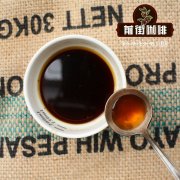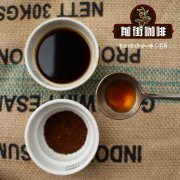Is it difficult to learn coffee roasting? What do you mean by coffee baking and baking?

Professional coffee knowledge exchange more coffee bean information please follow the coffee workshop (Wechat official account cafe_style)
Raw beans refer to coffee, the main ingredients of raw beans, protein, oligosaccharides, caffeine, chlorogenic acid, amino acids and so on.
After the chemical changes caused by heat baking, coffee beans have very unique color, bitterness, homesickness, acidity and texture. Because of the influence of heat baking, ⋯⋯such as oligosaccharides, amino acids, chlorogenic acid and so on are reduced.
Shallow roasting refers to the bursting reaction of coffee beans from an explosion (explosion: coffee beans during roasting process, when the temperature is 190 ~ 200 degrees Celsius). ) from the beginning to the end of the explosion.
The coffee in this range is mainly sour and flavor. if it is not roasted properly, it will have a sense of astringency and irritation. at the same time, the mellow thickness and flavor of the coffee are low.
Moderate roasting refers to the range of coffee beans from the end of the first explosion to the beginning of the second explosion, during which we can judge coffee beans by three degrees: moderately shallow (coffee beans have obvious wrinkles), moderate (coffee beans wrinkles have been flattened), and moderately deep (coffee beans have changed color further.) the volume starts to get bigger).
The taste of moderately roasted coffee has begun to convert sour taste and flavor into mellow thickness and balance, and the sour taste becomes lighter and lighter as the roasting degree deepens.
Deep roasting refers to the coffee beans into the second explosion (second explosion: coffee beans during the roasting process, the temperature is about 230 degrees Celsius, the burst sound is smaller and denser than the first explosion. At the beginning, it begins to develop to a deeper baking degree, up to a period of time after the end of the second explosion.
At the beginning of baking, the furnace temperature will drop, and after baking for more than a minute, the furnace temperature will gradually rise, and at this stage, dehydration will be carried out at the same time. When the dehydration is completed, it begins to enter the baking stage, when the color begins to be deep. At the same time, the internal pressure of the coffee bean expands together, and the cells begin to disintegrate. This is the first burst, the core cells of the coffee bean. Also because the gas produced during this period, that is, the CO2 of cooked coffee beans, which we often mention during this period, continues to make the coffee beans expand continuously, and the nucleus makes a sound again, this is the second burst, which makes us see that coffee beans are not only darker in color, but also their composition is decreasing, and the gas of CO2 is also increasing a lot.
When the gas content of CO2 increases, its hair will rise when it is flushed by hand. The longer it is baked, the higher the moisture ratio will be lost. There are many coffee beans.
Specific ingredients, because the deeper the baking, the ingredients will also be reduced!
The five major changes in the process of baking beans, fragrance, color, weight, volume and sound, are all the key to getting attention!
Important Notice :
前街咖啡 FrontStreet Coffee has moved to new addredd:
FrontStreet Coffee Address: 315,Donghua East Road,GuangZhou
Tel:020 38364473
- Prev

Understand coffee roasting curve Coffee roasting degree explains several coffee roasting curves
For more information on coffee beans, please follow the coffee workshop (official Wechat account cafe_style) in the coffee roasting world, the baking curve is a technical term for recording changes during roasting, understanding the water content of raw coffee beans, and carefully measuring the weight before and after roasting. In addition to recording the production area and baking capacity, waiting for the baking to be completed, also
- Next

How does coffee get to Yemen? a description of the historical flavor and taste of Yemeni coffee.
Professional coffee knowledge exchange more coffee bean information Please follow Coffee Workshop (Wechat official account cafe_style) for 150 years since the 16th century, Yemen has been the exclusive supplier of coffee worldwide, all coffee is exported through the port of Mocha in the Red Sea. Under the unique microclimate and high altitude environment of Yemen, the coffee produced has rich sweetness and chocolate flavor.
Related
- Beginners will see the "Coffee pull flower" guide!
- What is the difference between ice blog purified milk and ordinary milk coffee?
- Why is the Philippines the largest producer of crops in Liberia?
- For coffee extraction, should the fine powder be retained?
- How does extracted espresso fill pressed powder? How much strength does it take to press the powder?
- How to make jasmine cold extract coffee? Is the jasmine + latte good?
- Will this little toy really make the coffee taste better? How does Lily Drip affect coffee extraction?
- Will the action of slapping the filter cup also affect coffee extraction?
- What's the difference between powder-to-water ratio and powder-to-liquid ratio?
- What is the Ethiopian local species? What does it have to do with Heirloom native species?

